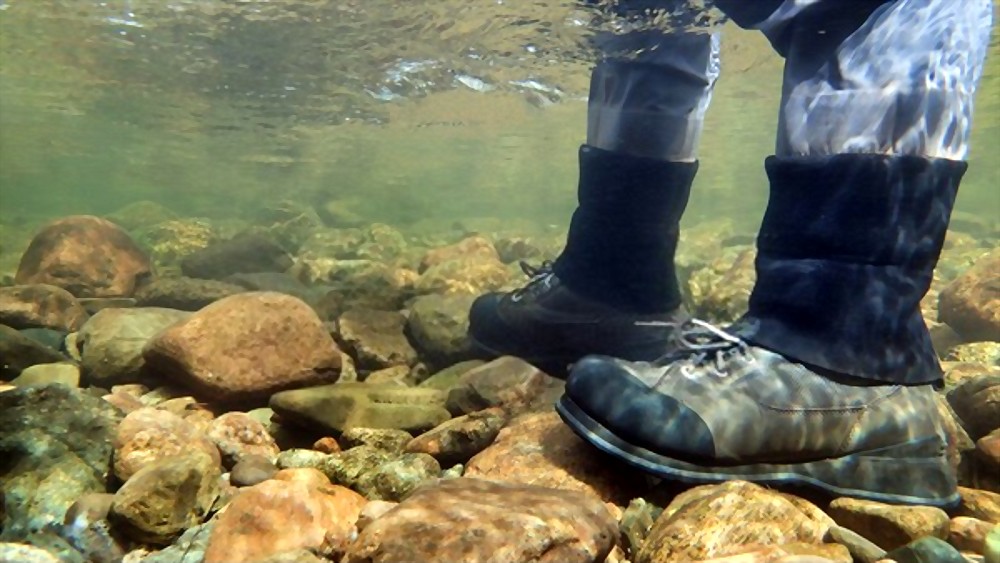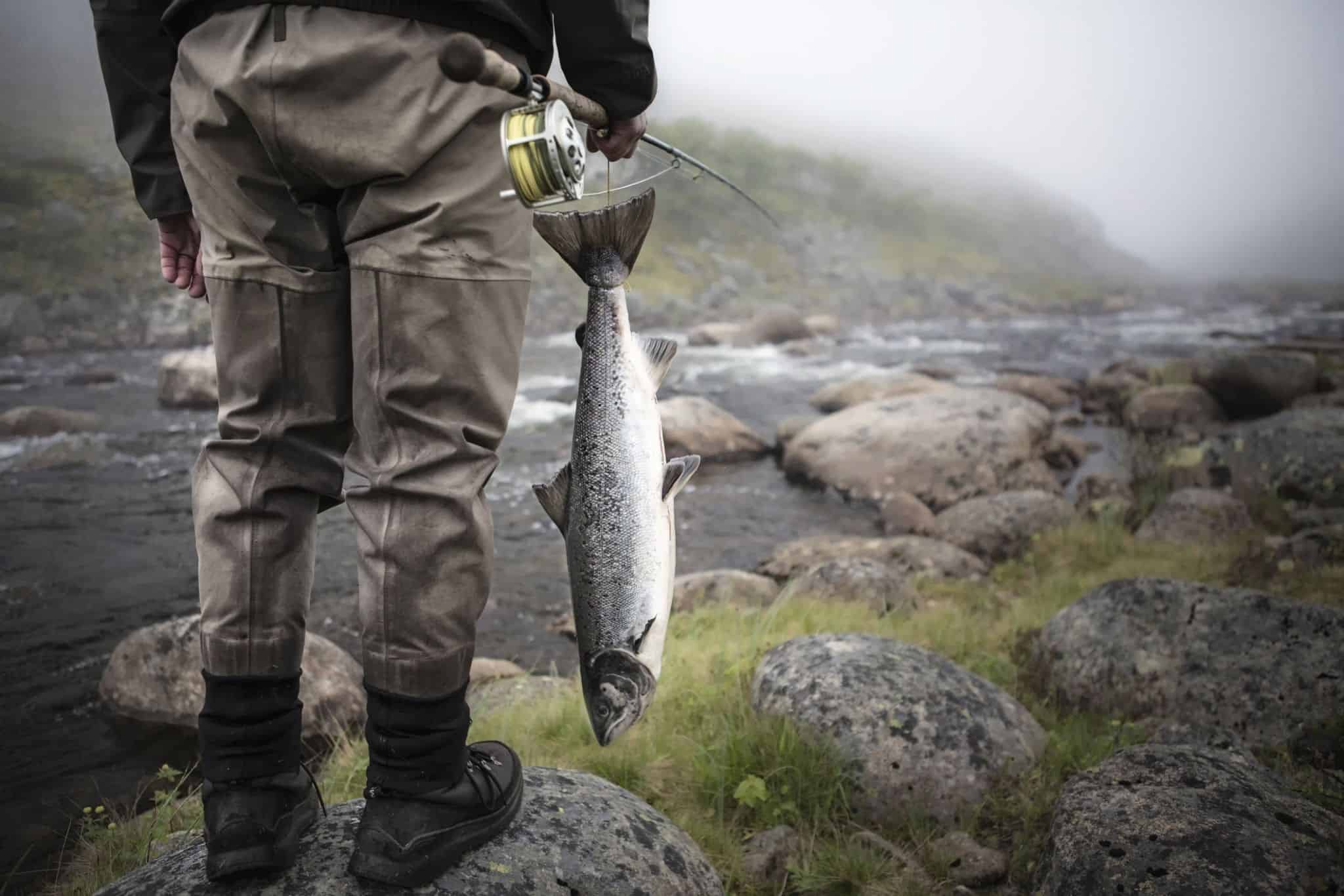Fishing barefooted can sometimes be bothersome due to strong currents or waves. Wading boots are created to support stability in the water. However, a frequently asked question is, what size of wading boots do I need?
In choosing wading boots, there are factors to consider before purchasing, especially the size. But if you want a perfect boot, get one size ahead of your usual hiking boots.
To have a quality fishing experience, you should pick the right boots. So, follow this article to learn more about wading boots.
How To Choose The Right Wading Boots?
Wading boots are made sturdy, hence it sustains comfortability, support traction to footing, and balance for anglers. Plus, your favorite sock may be worn without wetting it from sea or river water.
Wading boots are different from normal shoes, although quite similar to hiking boots. So, you should look into the type of sole, the support offered, the quality of material, and its sizing.
Sole
The first thing an angler should consider for purchasing wading boots is the traction of the soles. A fishing adventure could never go wrong if your boots are comfy enough to provide a good foundation when moving.
In maintaining balance over muds, stones, water, and uneven surfaces, three types of soles can be chosen. Either rubber soles felt soles or cleated soles.

Wading Boots Rubber Soles
If you have a pair of hiking boots already, you may feel the same texture as wading boots’ rubber soles. Sometimes rubber soles are mistakenly described as hiking soles wading boots.
Rubber soles are superior in terms of traction and durability once worn on unsteady areas with muds, and rocky traces. These are a great selection for going on long treks on woodlands going to the desired fishing destination.
Wading Boots Felt Soles
Felt soles are designed to be an inch thicker than rubber soles to be closely in-touched to the sole. These felt soles are thought to be a disadvantage in wet areas, which is not true.
However, the truth reveals that felt soles are excellent in gripping wading boots especially when stepping on slippery, rocky, and molded surfaces which have a high risk for falling injury.
On another note, felt soles on wading shoes tend to dry longer than rubber soles. Bacteria from fish may hold on to for a few minutes, hence you become a carrier of that problem.
Avoiding entry of bacteria to caught fishes can be resolved by washing them thoroughly before cooking.
The only downside of felt soles is the durability of the material. These soles are less durable than rubber soles, and they wear out over time and will need replacement.
Wading Boots Cleated Soles
Looking for secure and safe fishing in water sources with extreme molded surfaces, moss patches, slippery rocks, or leafy tracks, wading’s cleated soles are best for you.
Cleated soles or studded soles save anglers from dangerous tracks ahead. This sole is like felt and rubber soles. A leathered strap but with added metallic spikes offers strong traction.
Cleated soles are a good option for their non-slippery material, however, wearing them on muddy surfaces may consume your time for cleaning after a fishing trip.
Support and Protection
Getting your feet wet with floating debris inside your shoes may be inconvenient. The criteria in choosing a perfect wading shoe should also require enough support and protection on your feet.
Wading boots should have adequate support from angles to your foot. The heel must be sturdy enough to be a foundation of balance and traction while walking.
In terms of security from the lacing system, go for wading boots whose laces are thick, have good texture, strong material, and are well-sewn inside the boots.
It’s best to have the laces sewn inside to avoid tripping and avoiding the entry of dirt into your boots. Also, laces must be tied properly for more stabilized movement.
Additionally, boot collars, toes, and heel caps must have sufficient padding for support and protection from susceptible injuries. Thus, this also prevents damage to wading boots.
Wading Boots Quality
Wading boots come in various designs, materials, and brands. Be keen on observing the texture and durability of materials. Invest in good quality wading boots rather than cheap ones.
For starters, hiking-style wading boots are already abundant to battle rocky tracks and rivers. Work Boot designs are recommended for ultimate anglers who go out fishing frequently.
A sneaker-style design of wading boots is for fishing on calm and clean rivers where you do not have to deal with muds and other debris.
Boots are also an essential part of boots. Either a nylon or polypropylene material is suggested rather than choosing cottony laces which are not good quality.
Along with the design, select a boot made from the durable texture of full-grain leathers or microfiber synthetic materials. It is important to have water-repellant boots that do not absorb moisture when wading.
Wading boots are not waterproof but they are designed to withstand water. Other boots are also featured with special drainage holes to let the water pass through the structure.
Wading Boots Sizing

A common piece of advice from long-time anglers is that bigger sizes are better than smaller ones. Boots tend to shrink in extreme weather conditions, and it can cause a lot of disadvantages.
Painful movement is the number one effect of incorrect boot size. You cannot move properly and eventually impedes the blood circulation which results in numbing of feet.
Wearing a wading sock to keep you warm is difficult and fitting socks will be impossible if you have small boots.
Too tight can easily destroy the quality of material and stitching due to excessive stress, which consequently wears out the boots. Aside from tearing, tight space easily builds up holes that lead to the entry of debris like gravels, mud, or water from the boot.
This does not only give you a painful and wet experience, it’s also uncomfortable and ruins the moment of your fishing trips. If you continue to purchase small wading boots, this could lead to further medical problems and damage to your feet in the future.
Therefore, choosing a size that is one size greater than your usual hiking boots is recommended. Select a 1 ½ additional size if you are planning to wear wading socks.
If you are still undecided on what size to choose, it is necessary to consult the manufacturer’s guidelines for sizing to have accurate wading boots. Furthermore, they will also assist you to select an appropriate pair of socks to match your boots.
Most importantly, ensure to be comfortable and secured so your fishing expedition will surely satisfy you.
Conclusion
Overall, what size of Wading Boots I need has been discussed above. We hope you have gathered enough information regarding the right wading boots so you can enjoy fishing.